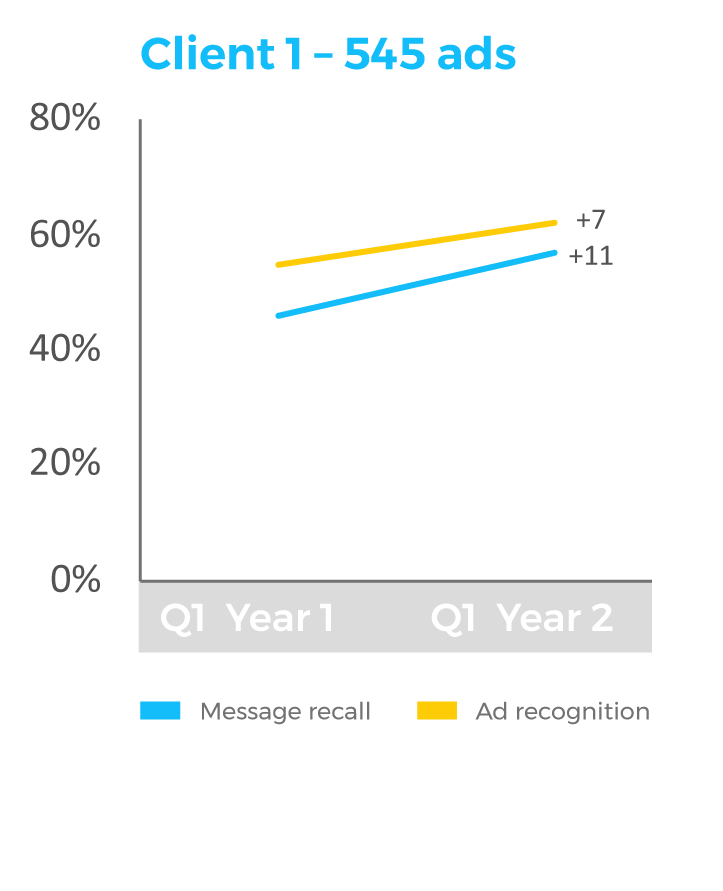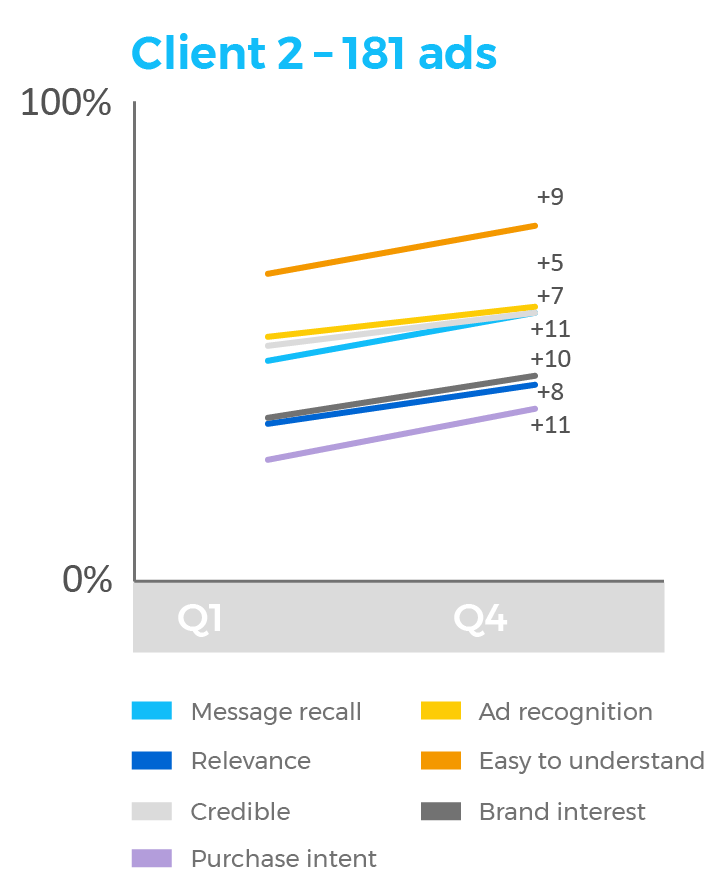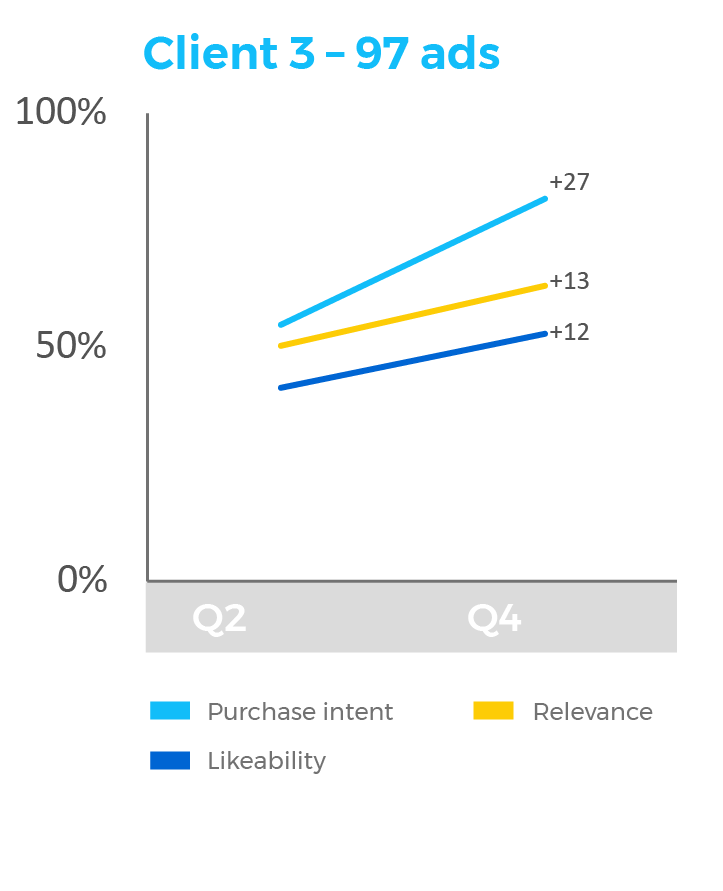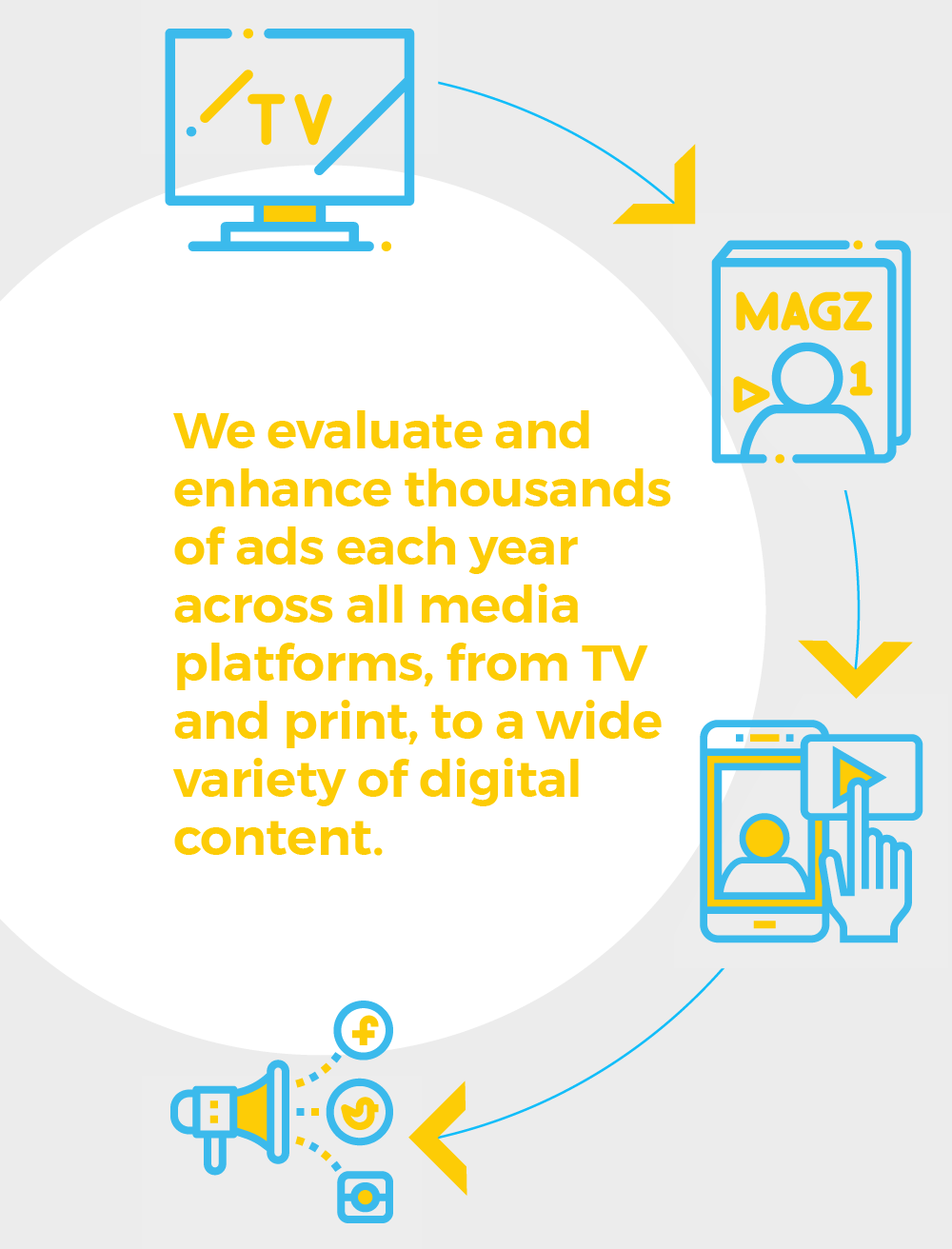What makes a great ad?
What makes a successful ad campaign?
How can I develop better ad creative?
Can you provide any best practices for effective advertising?
These are all questions we often hear from our clients.
There is of course no magic formula for making a great ad. The artistic aspect of advertising means that there are no set rules for advertising success and effectiveness, only best practices. And sometimes, creativity requires you to break away even from those best practices.
Take, for example, Old Spice’s Red Sweater ad, which ran during the 2018 Grammy Awards in the US. The 60-second ad in French, with no subtitles, is not the kind of approach that would fit into traditional advertising best practices. But Old Spice has built a reputation for quirky advertising. Therefore, this approach fits the brand’s personality. The ad also drove conversations about the brand, achieving its goal.
What is great advertising?
Before discussing what makes a great advertisement, let’s start by defining what we consider to be great advertising.
In our view, a great ad drives business results; it successfully meets the brand’s marketing objectives.
Even an ad which has become iconic isn’t always successful. An example of this is Taco Bell’s famous Chihuahua campaign from the late 1990s. The advertising campaign was wildly successful at reaching huge audiences. It seeded itself into pop culture and was strongly linked to Taco Bell. The problem was that it didn’t impact sales, and that’s what the campaign was tasked to do.

A great ad
drives business results.
It successfully meets the
brand’s marketing objectives.

The importance of ad breakthrough

But one common factor among all ads which go on to become iconic, successful or not, is that they get noticed. They stand out among the other advertisements, media and content competing for the audience’s attention. And people are willing to engage with them.
In today’s fast-moving and cluttered media environment, people can choose to engage with or skip, thumb through
and ignore content. Getting people to watch or read your ad can be a challenge. Just look at the average view time of your digital video ads as proof!
Therefore, a great ad needs to effectively break through all this noise.
Nowadays, understanding your ad’s ability to break through is just as important, if not more so, than understanding how well it performs once it has been noticed. This is why assessing ad breakthrough is a key part of our ad testing solutions.
![]()
A great ad needs
to effectively break
through all the noise.

Other critical characteristics
of successful advertising
Let’s assume your ad has broken through the noise and grabbed the viewer’s attention. What else can make it a great ad? A common factor in great advertising is that it often also achieves the following two results:

Strong
brand recall

Strong mental availability of the message
For an ad to successfully drive business results, consumers should be able to connect the brand to the creative (brand recall). The most successful ads also clearly convey a message that viewers are able to recall in critical situations (mental availability).
The best ad campaigns are often the ones that clearly articulate the brand value to their audience, either intrinsically or extrinsically.
People don’t want to work hard to figure out what you’re trying to tell them. So, ensure that you clearly communicate your message and that it doesn’t lead to confusion. Only 1% of ads that are very difficult to understand achieve the highest levels of performance.
As we mentioned earlier, breaking the rules can sometimes result in successful advertising. However, for every Geico or Old Spice campaign that benefits from breaking the mold, there are so many more that lose out.
Based on our extensive ad testing experience, we’ve set out our best practices for making a great ad below. These guidelines generally aid in ad breakthrough, brand recall and mental availability – all characteristics of great advertising!
12
best practices for an effective ad
We’ve conducted numerous advertising metaanalyses across more than 20 different verticals, and in every major region globally. This means that we’ve learned a lot about what makes the best (and worst) ads in different formats and contexts.
With today’s shift towards digital advertising, we’ve focused especially on determining what makes a successful digital ad. From mobile videos and social media ads, to mobile vs desktop ads, we’ve analyzed thousands of advertisements to generate our digital advertising best practices.
The following 12 themes were most common among the strongest digital ad creative:
Best practices to maximize ad creative:
1
Brand early, and use multiple brand cues
2
Make the brand the star, not an accessory
3
Show the product in use
4
Keep it simple, use only one or two claims
Best practices by ad format:
5
Use a strong opening hook for video ads
6
Think billboard rather than print for display and post ads
7
Think silent movie for social feed advertisements
8
Only use the time you need
Advertising best practices by device:
9
Attention is more fleeting on mobile, so ensure your brand is not lost
10
For smaller screens, keep your ad even shorter and simpler
11
Zoom into images for smaller screens
12
Assume video doesn’t cross devices
We often find that the ads and advertising campaigns which follow these best practices are most effective. Indeed, the more of these advertising best practices they follow, the more successful they tend to be.
We ourselves use these best practices to help our clients create stronger and smarter ads over time. By drawing on these learnings, we’ve already successfully guided long-term advertising improvements for many of our clients.
Take a look, for example, at the graphs below, which track the ad performance of three of our top clients over the course of a year. We provided these three clients with custom metaanalyses, based on our learnings. And all three saw a marked improvement in their creative performance.



How can you ensure that your ad will be great?

The truth is that you can’t. Advertising is similar to music in this regard. If making number one hits was easy, there would
be no such things as ‘one-hit wonders’.
Nevertheless, there are steps you can take to set up your ad campaigns for as much success as possible:

Set clear, realistic and measurable goals and objectives. This enables you to accurately determine the success of your ad campaign – how ‘good’ or even how ‘great’ it was – against your business goals.

Validate and optimize your ads before going in market, by pre-testing your campaign ideas, earlystage creative or finished copy.

Extract and apply best practices specific to your brand, by conducting a metaanalysis of your past ad creative.
Ad testing with MetrixLab

In our whitepaper Rethinking ad testing, we discuss the challenges of today’s media environment and its implications. In response to the changes in media consumption, we have been using in-context measurement to evaluate advertising prior to launch for more than a decade.
We evaluate and enhance thousands of ads each year across all media platforms, from TV and print, to a wide variety of digital content including videos, banners, social media and branded content.
On top of this extensive experience in ad testing, we also regularly conduct our own innovative research to test and validate specific topics, including our ad testing validation study. And we have collaborated with several universities, to advance advertising-related studies such as impact of context, use of metaphors, and intercultural differences.
Author
Rick Candelaria
Senior Vice President Consulting
Want to know more?
About MetrixLab
MetrixLab provides consumer insights that drive smarter business decisions. A truly global digital research agency, we pioneer new technologies and integrate multiple data sources to push the boundaries of research. This enables our experts to provide high-quality insights at scale, at speed and for an unparalleled value. Our passion, expertise, and solutions enable our clients to succeed at product innovation, brand engagement, and consumer value.
Active in over 90 countries, MetrixLab is a proud partner of more than half of the world’s top 100 brands and part of Toluna.









